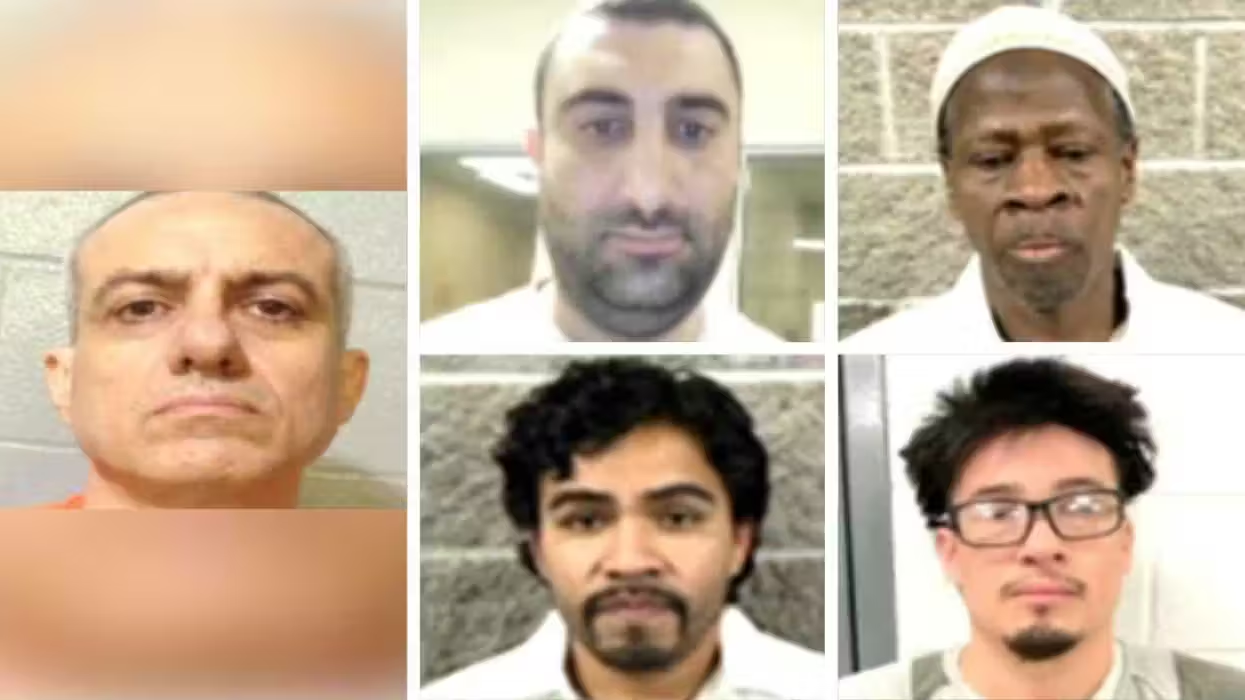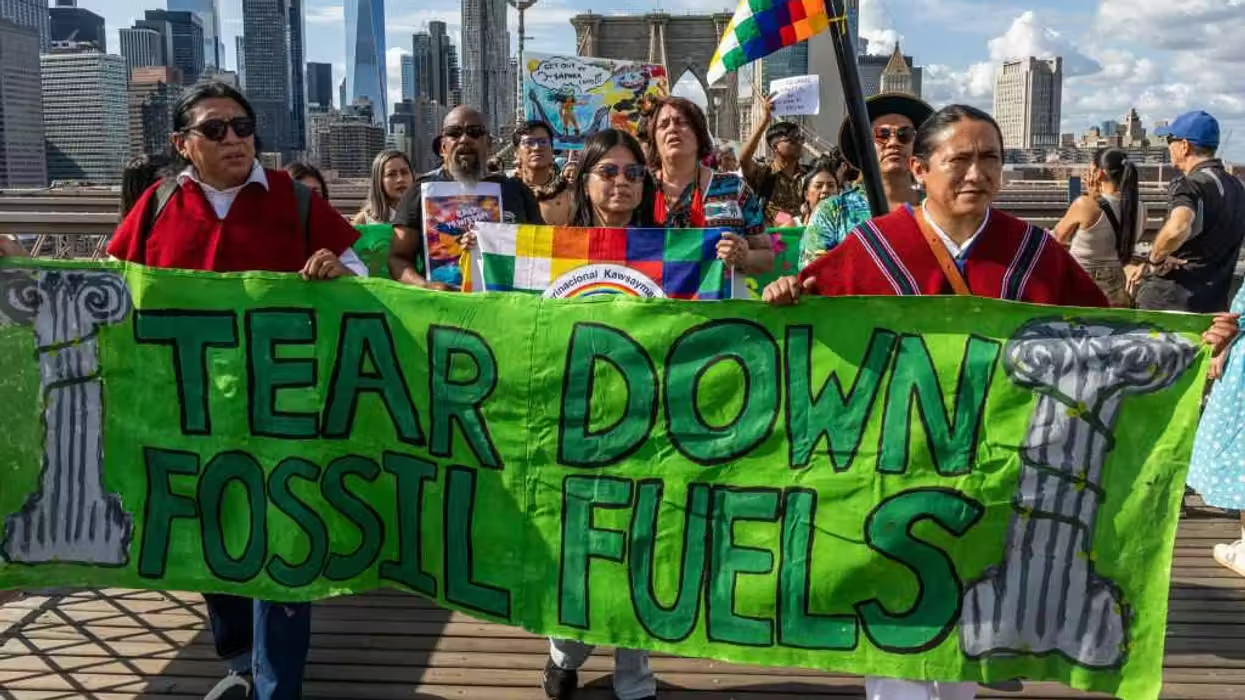
© 2025 Blaze Media LLC. All rights reserved.
New Gun Control Proposals: Key Points Gun Advocates Should Be Considering
February 14, 2013
The desire to just “do something” in the wake of a tragedy like Newtown must be tempered by a realistic assessment of the efficacy and constitutionality of the proposals.
 Sen. Dianne Feinstein, D-Calif. speaks during a news conference on Capitol Hill in Washington, Thursday, Jan. 24, 2013, to introduce legislation on assault weapons and high-capacity ammunition feeding devices. Congressional Democrats are reintroducing legislation to ban assault weapons but the measure faces long odds even after last month's mass school shooting in Newtown, Conn.(Credit: AP)
Sen. Dianne Feinstein, D-Calif. speaks during a news conference on Capitol Hill in Washington, Thursday, Jan. 24, 2013, to introduce legislation on assault weapons and high-capacity ammunition feeding devices. Congressional Democrats are reintroducing legislation to ban assault weapons but the measure faces long odds even after last month's mass school shooting in Newtown, Conn.(Credit: AP)
This opinion piece is part of a series on Guns in America that explores the use of firearms in our country and the debate over gun control. This is an editorially independent series sponsored by Tactical Firearms Training Secrets.
-
Gun control is once again at the center of the national debate. As usual, following tragedies like Newtown, gun-control advocates hope to seize the opportunity to push through long sought-after reforms. The pro-gun rights crowd should be skeptical about the efficacy and constitutionality of such reforms.
The Supreme Court held in District of Columbia v. Heller that the Second Amendment protects the right to self defense with a firearm against unreasonably onerous encroachments by the federal government. In McDonald v. City of Chicago, the Court expanded those protections to the state governments, prohibiting states and localities from similar unreasonable encroachments. Gun-rights advocates should understand, however, as all reasonable people should, that the right to self defense with a firearm is not absolute. Yet gun-control advocates should also understand that the vast majority of gun-owners in this country are law-abiding people who use those guns for sport, recreation, hunting, and the lawful defense of self and others.
Below I examine some of the current proposals and whether gun-rights advocates should support them.
“Assault Weapons” Ban: You can often tell the difference between a gun-rights advocate and a gun-control advocate by whether they place scare quotes around the term “assault weapon.” Under both the 1994 Assault Weapons Ban and newly recommended bills an “assault weapon” is defined by cosmetic features, not by whether the gun has uniquely dangerous functions. Assault rifles, on the other hand, which are produced for military applications, have selective rates of fire, usually a choice between single shot semi-automatic (each trigger pull discharges one round) and fully automatic (rounds will discharge rapidly for the duration the trigger is pressed). Assault rifles have been heavily regulated since the New Deal.
Assault weapons were defined under the 1994 law by features that have little or nothing to do with lethality. One such feature, a folding stock, allows people of different heights use of the weapon. Another feature, a “barrel shroud,” protects the user from touching a hot barrel. Collectively, these features make the guns look more dangerous, meaning they look more like guns used in movies, but they do not make them more dangerous.
Moreover, assault weapons are rarely used in gun crimes. In 2011, nearly 13,000 people were killed by violent acts, yet only 343 were killed by rifles of any type. By comparison, blunt objects (hammers, bats, etc.) killed 500. Furthermore, if assault weapons are banned, it does not follow that those 343 people would still be alive. The killers would just choose a different weapon.
Rather than being used for violence, assault weapons are more often used for self-defense (as occurred in Rochester, NY in January) and sport. Supporters often agree that little crime will be stopped by the ban, yet they often say “it’s a start.” The question must be asked: Banning one of the most responsibly used weapons, one that is used less often for violence than are bludgeons, is a “start” to what?
Magazine Limits: Any limit on magazines must comply with the standards of Heller. Firearms that are in “common use” for the purposes of self-defense are strongly protected, and the government must offer sufficient justification if they wish to take those weapons away from law-abiding citizens.
New York’s recent ban on magazines that hold over seven rounds comes very close to unconstitutionality. First, magazines between 12-19 rounds are certainly in “common use.” Most semi-automatic pistols, the most popular type of gun in America, come with a magazine between 12-19 rounds. Second, at some point a low limit on magazine size compromises the right to self-defense. Even experienced shooters will not hit their target every time, and it often takes many shots to bring down an active shooter.
In the face of these considerations, the government must sufficiently demonstrate that magazine limits would curb gun violence while not unduly infringing on Second Amendment rights. Because magazine limits will do little or nothing to curb gun violence, this is a difficult showing to make. Those who want to commit large-scale gun violence, or even common street crime, will not be deterred by magazine limits. A moderately experienced shooter can change magazines in seconds, and anyone who can’t get one of the hundreds of millions of high-capacity magazines already in circulation will simply carry more magazines with him. The Virginia Tech shooter carried a bag with 19 magazines.
Mental Health and Expanding Background Checks: Currently, Brady Bill background checks do not apply to private sales between individuals. Expanding background checks to all sales could be a reasonable move, but we should not expect it to do much to curb gun violence.
The storied “gun show loophole” only accounts for a tiny fraction of guns used in crimes. According to a 2001 Justice Department survey of state and federal prisoners, only 0.7 percent of weapons used by the prisoners were acquired at gun shows. Extending background checks to sales that take place outside of guns shows would be unfeasible without a gun registry that documents transfers, and a gun registry is not only a political impossibility, it is prohibited by the Firearm Owners Protection Act. Furthermore, gun-rights advocates should resist a registry, not only because it will do little to stop gun violence, but because law-abiding Americans should not have to wade through a bureaucratic labyrinth in order to exercise their Second Amendment rights.
A better proposal would strengthen the communication between the mental health system and the Brady background check. Those with qualifying mental-health issues are already prohibited from purchasing a firearm, but records of mental disorders are often missing from the system. Again, however, we should be aware that this will do little to reduce gun crime. Most people who commit gun crimes are not crazy, they’re merely criminals.
Three principles must guide our thinking on mental health issues. First, firearms should be prohibited only to those with dangerous mental health problems. Merely being depressive or bi-polar is not enough. Second, we should not increase record-sharing in a way that violates therapist-patient privacy. If therapists are required to report every person with violent thoughts, then many people may be reluctant to seek help. Third, we must respect the civil liberties of those who may be mentally troubled. People should not be deprived of their Second Amendment rights based on hunches, but rather through proper adjudicatory channels.
Conclusion and Other Considerations: A serious debate about gun violence in this country should not focus on mass shootings, which are a tiny, albeit horrific, part of gun violence. Many commentators bring up America’s “culture of violence” while ignoring government policies that help create that culture. First and foremost is a failed but perpetual drug war that turns nonviolent people into criminals and helps create a network of black markets where violence is necessary part of doing business. Those black markets are also conduits for illegal weapons. Approximately 20% of guns used in crimes come from these markets.
Second, we must address a failed public school system, particularly in inner cities, that helps perpetuate poverty and crime. Nearly 66 percent of African-American males who drop out of high school will spend at least a year in prison. Schools must be adaptive to these situations rather than locked in to a failed model because of bureaucratic and political inertia. School choice is the only viable option for fixing those problems.
We must pursue well considered laws if we want to lessen America’s gun violence. However, the desire to just “do something” in the wake of a tragedy like Newtown must be tempered by a realistic assessment of the efficacy and constitutionality of the proposals.
Related Contributions on Guns in America
Want to leave a tip?
We answer to you. Help keep our content free of advertisers and big tech censorship by leaving a tip today.
Want to join the conversation?
Already a subscriber?
more stories
Sign up for the Blaze newsletter
By signing up, you agree to our Privacy Policy and Terms of Use, and agree to receive content that may sometimes include advertisements. You may opt out at any time.
Related Content
© 2025 Blaze Media LLC. All rights reserved.
Get the stories that matter most delivered directly to your inbox.
By signing up, you agree to our Privacy Policy and Terms of Use, and agree to receive content that may sometimes include advertisements. You may opt out at any time.






